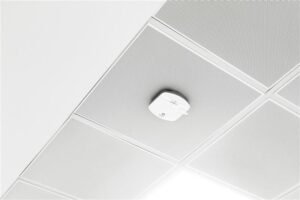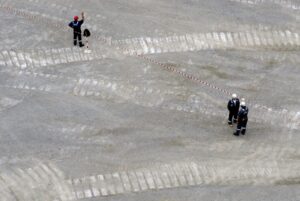Table of Contents
In today’s demanding healthcare environment, efficiently managing staff workflows is critical to delivering quality patient care. However, healthcare facilities often struggle with challenges such as scheduling conflicts, long wait times, staff burnout, and inefficient task allocation. These issues can compromise patient care, increase costs, and negatively impact staff well-being. Real-Time Location Systems (RTLS) offer an innovative solution to these pervasive problems.
Understanding the Challenges in Healthcare Staff Workflows
Balancing staff availability with patient needs is a complex task, and healthcare professionals face challenges in managing workflows on a daily. Inadequate scheduling can lead to understaffing, overwhelming the staff and compromising patient care, or overstaffing, resulting in unnecessary labor costs. Poorly managed workflows can also lead to extended patient wait times, negatively impacting patient satisfaction and outcomes.
High workloads and inefficient workflows contribute to staff burnout and fatigue, affecting their performance and overall well-being. A National Academies of Medicine report highlighted that burnout had reached crisis levels, with up to 54% of nurses and physicians, and up to 60% of medical students and residents, experiencing burnout. Additionally, a recent study revealed that nearly 33% of nurses leave their job within the first year due to burnout and job dissatisfaction. Burned-out staff are more likely to make errors and have lower job satisfaction.
Without clear oversight into task allocation, some staff members may be overburdened while others are underutilized, hindering productivity and causing frustration among staff members. Ineffective workflow management can result in the underutilization or misallocation of resources, such as medical equipment and facilities, slowing down operations and increasing costs. For instance, hospitals spend an average of $2,873 per patient per day due to inefficiencies and delays in patient care processes. Managing extensive documentation for regulatory compliance can be time-consuming, detracting from the time available for patient care. Furthermore, quick mobilization and coordination of staff during emergencies are crucial, but poor workflow management can delay response times and affect the quality of emergency care.
Transforming Staff Workflows with RTLS
Litum’s Staff Workflow RTLS is designed to address these challenges, offering a comprehensive solution that helps healthcare facilities optimize staff management, enhance patient care, and create a more efficient work environment. The real-time data from the system allows for prompt adjustments to staff schedules, ensuring resources are allocated where they are needed most. This dynamic approach prevents both understaffing and overstaffing, leading to a more balanced and efficient schedule.
Implementing a healthcare RTLS-powered option like Litum’s Staff Workflow Solution makes healthcare operations more efficient and effective in several ways:
- Enhanced Efficiency and Productivity: Understanding how staff spend their time is crucial for identifying ways to work more efficiently. Litum’s solution provides detailed insights into staff movements and interactions, helping administrators pinpoint inefficiencies and streamline workflows.
- Improved Communication and Response Times: Speeding up communication and response times is vital in a healthcare setting. With features like automatic nurse calls, Staff Workflow RTLS ensures quick and effective communication, allowing staff to respond promptly to patient needs.
- Consistent Patient Care: Staying on top of nurse visits with reminders and reports is essential for ensuring consistent patient care. Staff Workflow RTLS helps manage and document nurse visits, making sure that patients receive the care they need without any lapses.
- Optimal Task Allocation: Assigning tasks and allocating staff effectively using real-time location information ensures that workloads are balanced and staff are utilized optimally. This effectively reduces the risk of overburdening some staff members while underutilizing others.
- Reducing Staff Fatigue: Providing timely patient assistance using live data helps prevent staff fatigue. By reducing errors and improving safety, the system ensures that staff are not overburdened, enhancing their well-being and performance.
- Data-Driven Improvements: Analyzing data from regular rounding and staff-patient interactions allows healthcare facilities to identify and address factors affecting patient satisfaction. This data-driven approach helps in making informed decisions that enhance the overall quality of care.

Real-Time Location Tracking for Healthcare Staff
A Commitment to Innovation and Excellence
Litum has demonstrated a strong commitment to innovation and excellence in the RTLS field, with over 20 years of experience and successful deployments in more than 50 countries. Litum’s in-house development and manufacturing process ensures that every component of the Staff Workflow RTLS — including anchors, charger stations, and tags — meets the highest standards of quality and functionality.
As healthcare facilities continue to face challenges in managing staff workflows, adopting advanced technologies like Staff Workflow RTLS becomes increasingly important. By embracing such solutions, healthcare organizations can enhance operational efficiency, improve patient care, and create a more supportive and effective healthcare environment.
Contact us today to see how our technology works.




